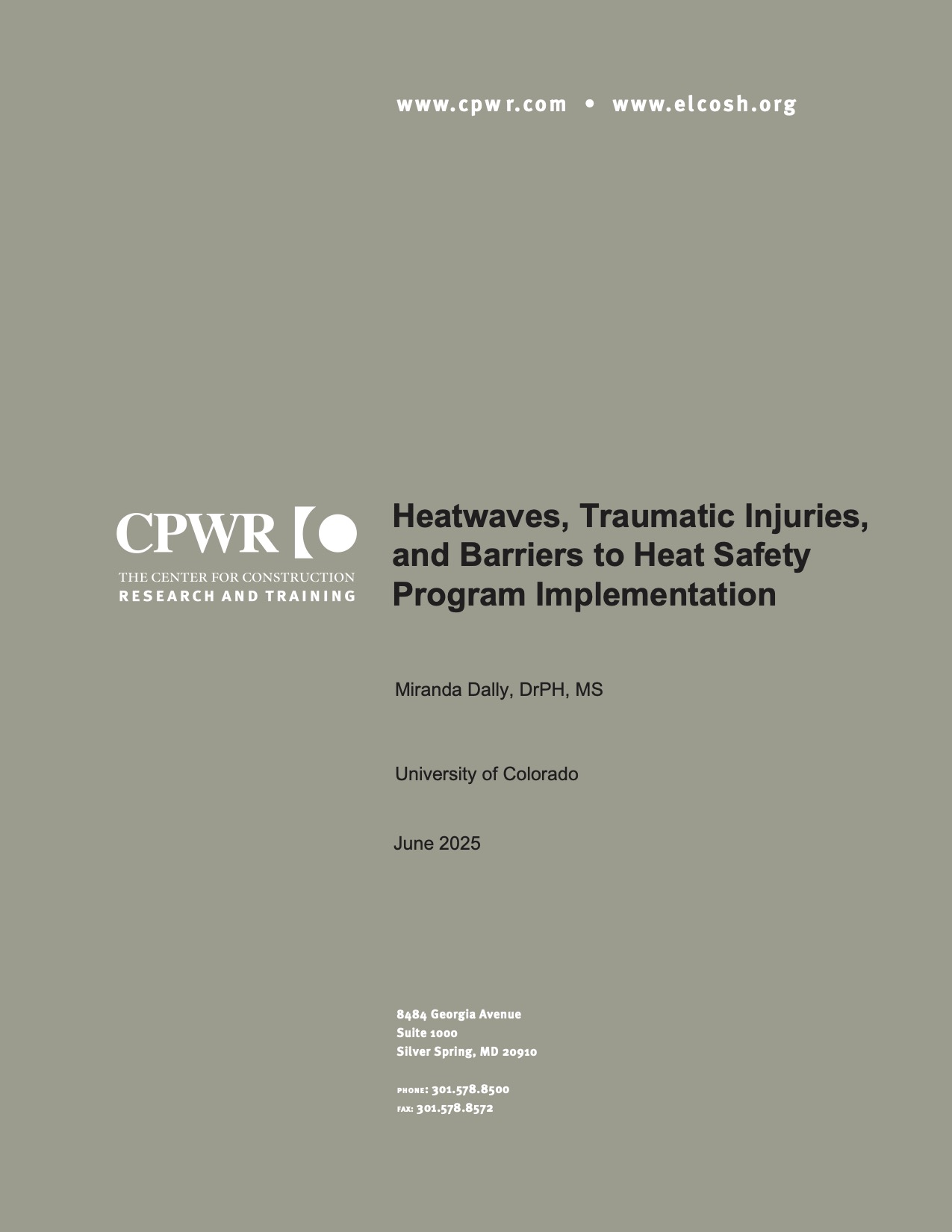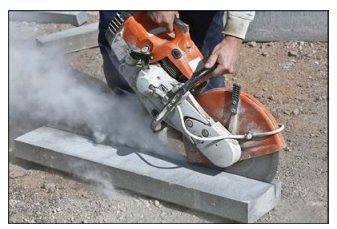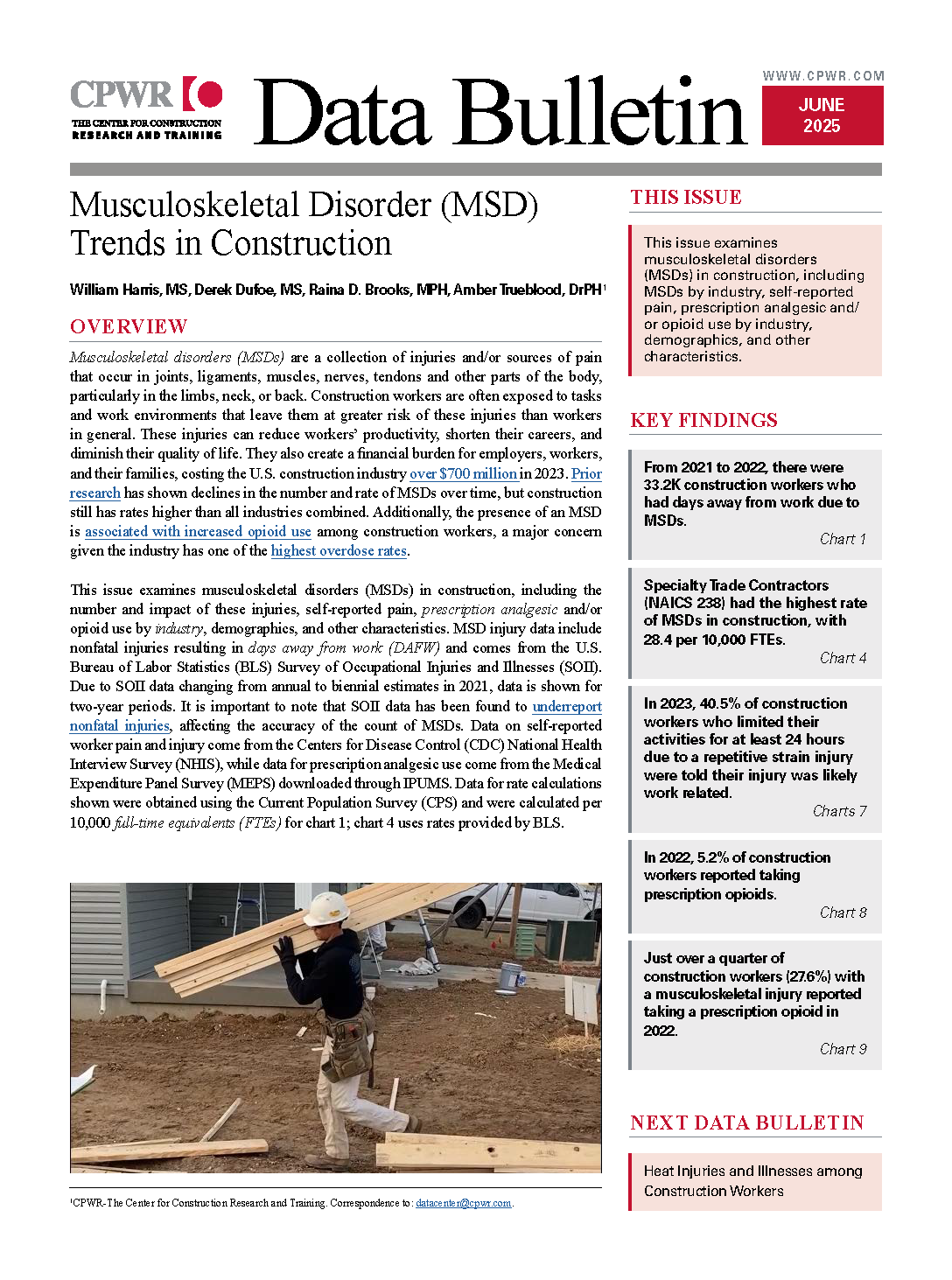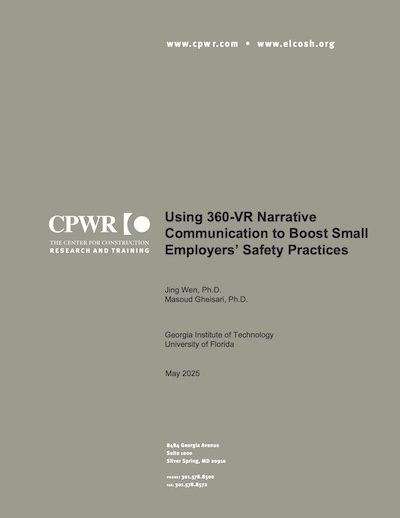1239 Results
This dashboard presents electrical injury data trends.
This dashboard presents information on nanomaterials in construction.
This dashboard presents COVID-19 vaccination historical data.
This dashboard presents electrical injury data trends.

This Small Study used a mixed-methods approach of meteorological data, workers’ comp data, interviews with managers, and field worker surveys to analyze safety trends and explore training, acclimatization practices, and workplace culture.

Hand-held power saws – “cut-off saws” – simplify cutting of materials like tile, stone, concrete, and steel but pose serious risks. This fact sheet offers guidance to prevent struck-by injuries and exposure to hazardous silica dust.
This dashboard highlights health risk factors reported by construction workers.

This data bulletin examines musculoskeletal disorders (MSDs) in construction; the number and impact of these injuries, self-reported pain, prescription analgesic and/or opioid use by industry, demographics, and other characteristics.

This study used data from 27,000 participants in CPWR’s Building Trades National Medical Screening Program—all former construction workers at Department of Energy nuclear sites—to understand the impact of colorectal cancer screenings....
